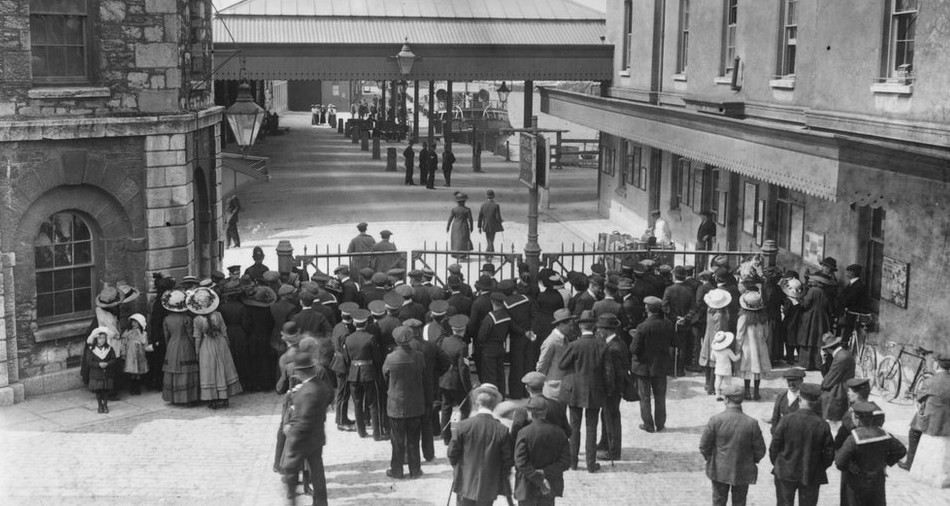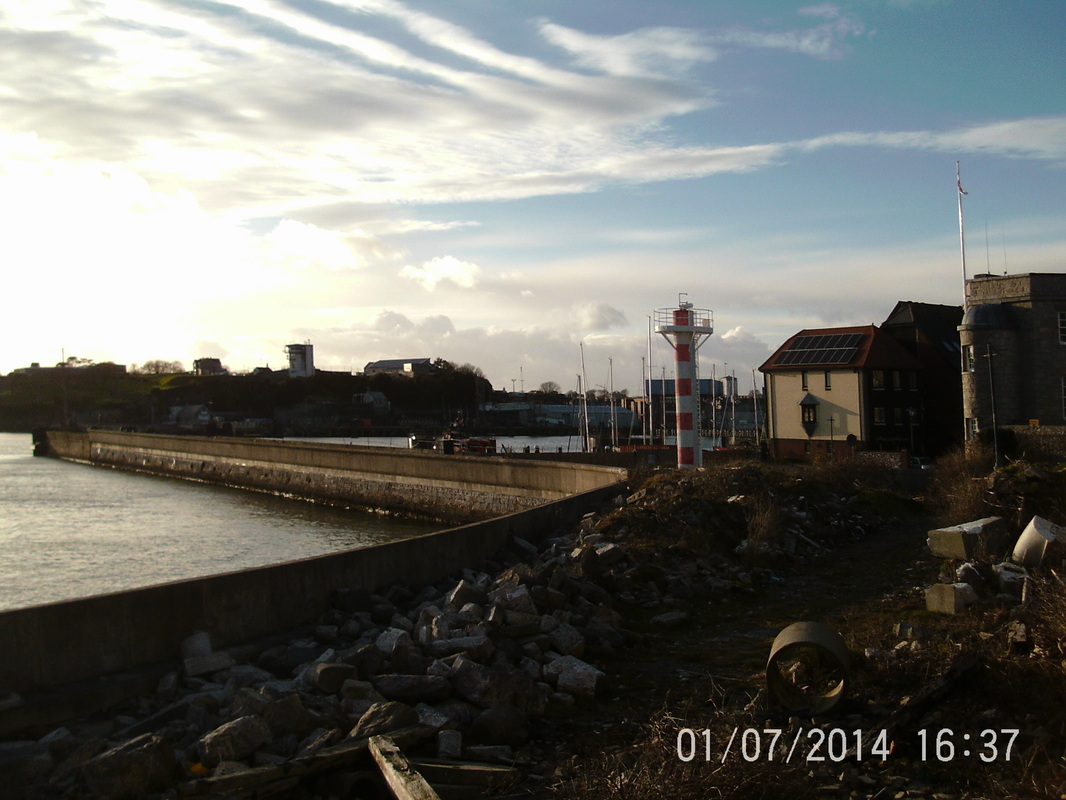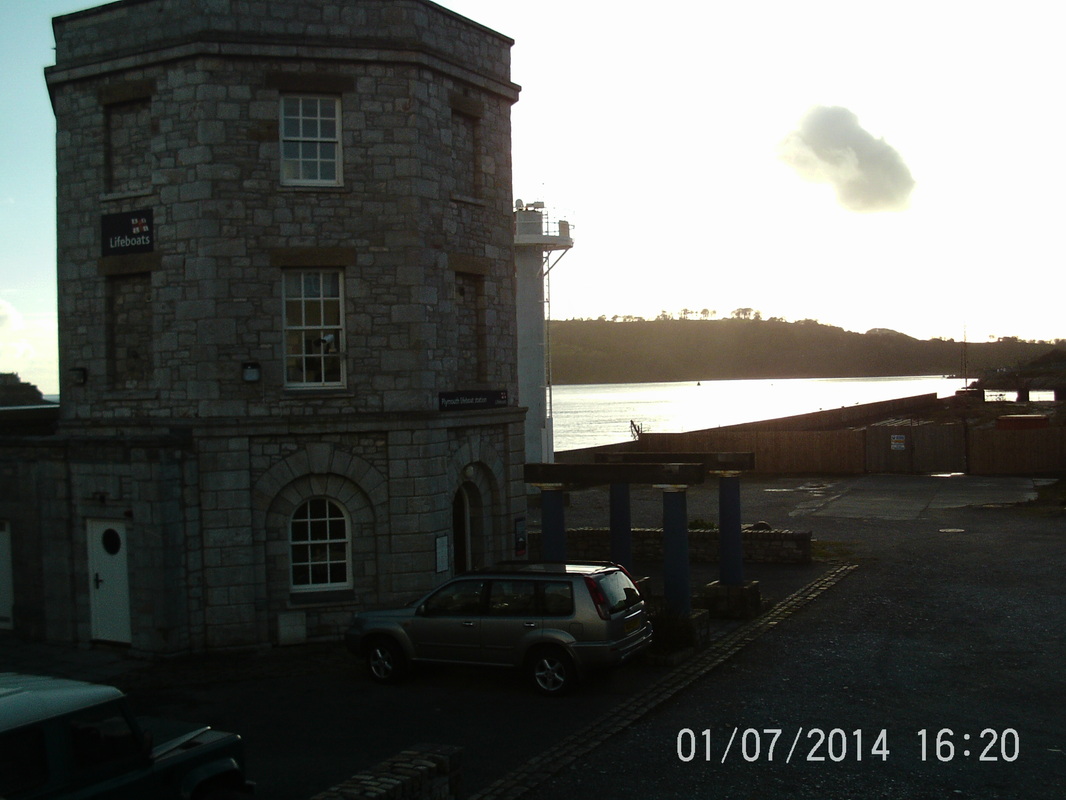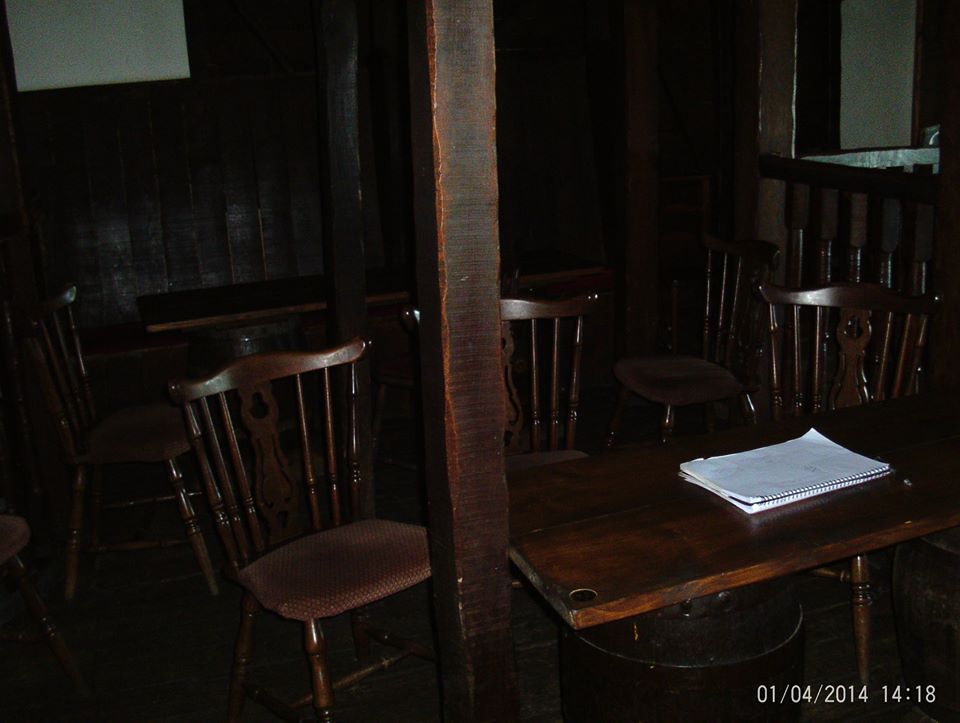So, yesterday, I went to Plymouth.
In general, film or stage dramatizations linked to the Titanic, finish with the arrival of the Carpathia, the ship which picked up the survivors, in New York. What many people do not know, is that the story did not end there.
Huge investigations ensued into the tragedy, both in the USA, and in England, and many of the surviving crew-members, who were British, returned to the UK, quite quickly, Many to give evidence, others to return home to their families. They returned on board the SS Lapland, which arrived at Plymouth, in Devon, England, on April 29th 1912.
There was an air of secrecy about the whole affair - the Lapland moored in Cawsand Bay, and the surviving crew ferried into Millbay from tenders. Lawyers and the local White Star Line representative, Frank Phillips, took security precautions to ensure that the press, and curious onlookers were kept away, while statements were taken from all crew members, in order to later decide who would appear at the Board of Trade inquiry
Once depositions had been given, the following day, most of the crew were free to return to Southampton on board an especially chartered train.
This is not the Titanics only connection with Plymouth.
- The Titanic's designer, Thomas Andrews, was last seen, before the Titanic sank, stood in the First Class smoking room, looking at a painting of Plymouth harbour.
- Several crew members and passengers also came from Plymouth and the surrounding area.
- It is said that if the Titanic had not sunk, Plymouth would have become a common port-of-call for her.
Putting on your walking boots and looking for the quay where the surviving crew arrived, and for the commorative plaque (which I have not yet been able to locate) is the same as any primary research. Take your camera and your notebook, ideally a map, and set out. But don't forget that you may unearth other gems as well.
In this case, I was going off some pictures of the place, taken by a Plymouth historian, and having passed it in a car once, so I had a rough idea of where it was.
I did stop first at the city Tourist Information Centre, and was very disappointed to learn that they had in fact never heard of the commemorative plaque to the surviving crew, and were not sure which pier at Millbay was the correct one. They said there had been some mention of something Titanic related in an old edition of a city guidebook, but it was not in their current issue. Undaunted, I walked across Plymouth Hoe, and headed for Millbay.
I was pleasantly surprised how easy it was to find the correct pier. It was not the one that the ladies in the information centre thought that it was, but by dint of finding the now RNLI building, I was able to locate the pier. It looks very different from how it did from the photographs of the crews arrival in Plymouth, and prehaps late afternoon sun, wasnt best for taking photos.
If anyone else wants to find it, it is the outermost pier on the Plymouth side of the Tamar, it is now mainly derelict, just used for the RNLI lifeboat, and the lifeboat station. Access, sadly, is through a private "no public right of way" housing development, so I decided not to walk down to the station, and took photos lent over the wall.
The first photo (Courtsey Shelia Heath) shows curious crowds gathered at gates (now no longer there) watching what is happening as the surviving crew arrive. The building on the left is the octagonal building which is now the RNLI station offices.
I met a gentleman there said that he had, for several years, worked at the RNLI station there. I asked him about the plaque, and he had never come across it, but he did tell me that this was definitely the correct pier, and that in those days, there was also a railway station there - which explains a lot about why this location was chosen, with the proximity of a railway station to the pier! That bears a lot more research.
He also told me about this video on youtube, made by a friend of his, of the area, which I also found very interesting.
Why look at the actual places, for theatre shows? It is not as if we are looking for film locations. But it is still important. For one thing, you look at how that place can be represented on stage. What is (or was) in which direction from there? That can inform blocking for the actors, and for designing backdrops. Also, in a local history production like this, taking the costumed cast, playing those people, on location for their promo photo-shoot.
If you are interested in finding out more about the Titanics connection to Plymouth, there is a fantastic facebook group called Titanic and the City of Plymouth and there is some wonderful research being done by a local historian, Nigel Voisey.





 RSS Feed
RSS Feed
